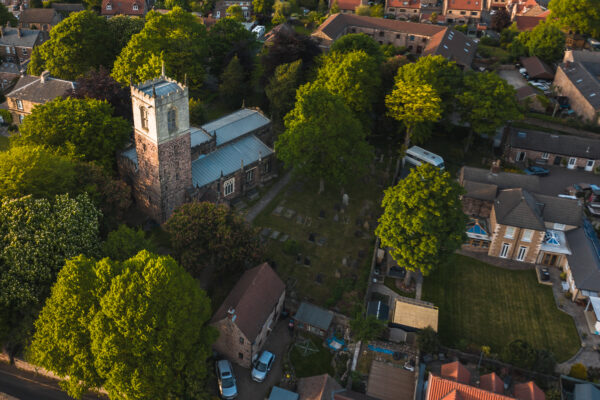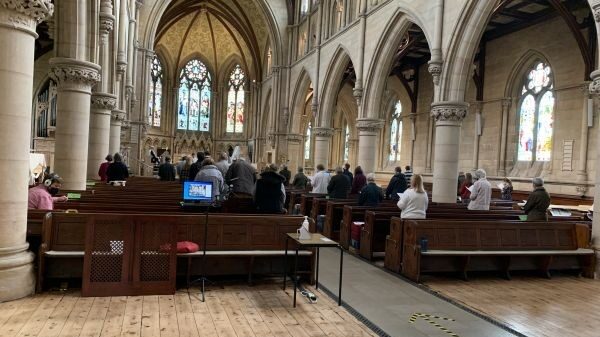Neurodiversity is a term used to refer to the different ways in which the brain functions, such as with socialising, learning and processing emotion. Examples of neurodivergence include autism, dyslexia, Tourette’s syndrome and ADHD amongst others.
The All Age Service on neurodiversity will be held on Sunday 5th February at 10.30am. Recent services at St John’s have incorporated the music of female musicians and black composers, which have helped to enrich the worshipping life of the church.
Matthew Rhodes is the Vicar of St John’s Ranmoor:
“St John’s has been on a bit of a journey thinking about inclusion and we thought about that in terms of gender and sexuality. We’ve also been thinking about it in terms of music, which is a big part of our life.
“Neurodiversity is another area we decided to explore. It wasn’t something that had occurred to me, but a member of the choir called Ruby raised it, and there are other members of the church who would describe themselves as neurodiverse.”
“People’s needs vary a lot, so trying to put an act of worship together for everyone is a challenge. But it’s been really helpful to learn what’s supportive for others. It’s about not making assumptions about how services are put together, and not assuming that everyone in the congregation will react in the same way.”
St John’s Ranmoor is part of ‘Inclusive Church Network’, which encompasses a team of churches, groups and individuals uniting together around a shared vision. The vision of the Inclusive Church Network aims to celebrate every person and to avoid discrimination.
Ruby discovered she was autistic in March of last year, and has been learning as much as she can about neurodiversity:
“Everyone should have the opportunity to take part in worship in a way that is comfortable. The church, in many ways, can be a very soothing environment for people who are neurodivergent. I have felt the warmest welcome here at St John’s, and I find the regular routine of weekly services to be very comforting.
“That being said, there can be difficulties with certain aspects of attending church. To name a few, the expectation to sit still and quiet can be anxiety-inducing for many neurodivergent people who have tics. It can also be distressing for those who stim; a term used to describe repetitive movements or vocalisations which can soothe anxiety, aid concentration and express emotion. For people who struggle with their attention span, it can be difficult to concentrate when listening to someone else speaking.
“I get very anxious if I don’t know exactly what will be happening next in a service. Many neurodivergent people face discrimination and don’t receive the support they need, making it even more important that we create a more accessible space for all. I encourage anyone to learn more about what neurodiversity is because we can’t make our society more accessible to all until we learn more about the varying needs of those around us. I lost huge parts of my identity, I developed low self-esteem and I’ve been through many bouts of depression. I experienced, and still experience, a lot of anxiety in most social situations.
“One of the things I love most about this spectacular world that God has created is how diverse everything and everyone is; it is the greatest work of art ever made. Each and every diverse brain is a part of that rich tapestry, made with purpose and love. By celebrating our diversity and being inclusive to all, we can honour one of the most fundamental values we hold dear: to love one another as God loves us.”
The service in February will utilise different areas of the church to include quiet spaces and crafts, as well as music. The aim of the event is to help provide a space for all to feel comfortable and to learn more about what it means to be neurodiverse.
For other churches thinking about putting on similar services, Matthew says it’s important to make sure people feel welcome and relaxed:
“It’s okay if you need to walk around or be on your own. Ruby has talked about people needing clarity in terms of instructions, so we’re trying to work on that. We’re having different prayer stations and workshop areas so people can choose where to go. There’ll be things like mindful colouring; a really quiet space and an area where people can go and learn music together. The more we can signpost people rather than take it for granted that they’ll know what’s being done, the better.
“There are always things to learn, but churches might be encouraged to find out some of the things already worked for people in terms of signposting activities. My message is that all are welcome. If we’re being fully welcoming then churches should be willing to be changed by the people who come to them. I hope people will be brave and talk to those with responsibilities in the church about their needs. It’s a big step, I understand that. But I also hope that church leaders will take the opportunity to engage with people with different needs and find out what works for them.
“I’m really grateful to Ruby for taking this initiative, and I hope more people will do that.”



